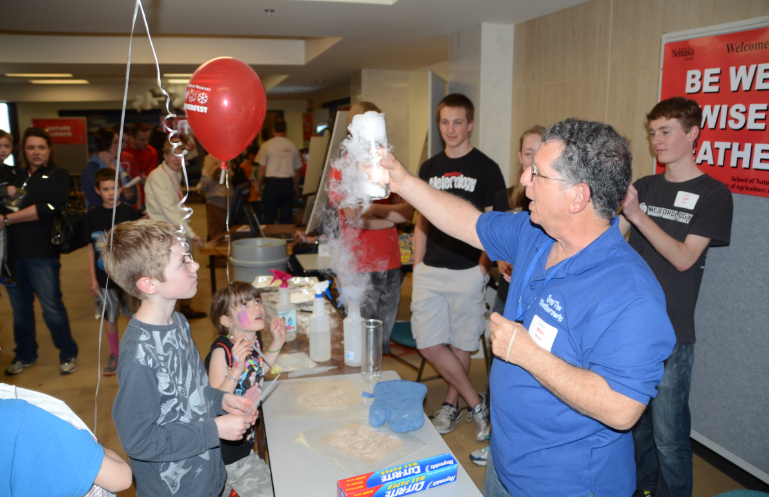
Clouds hung from the ceiling, balloons floated to the sky, and squeals of glee filled the air at Weatherfest on April 6.
Hundreds attended the School of Natural Resources' 13th annual Weatherfest in Hardin Hall, interacting with storm chasers, weather casters, and science exhibits focused on the wonders of weather.
Ken Dewey, SNR’s outreach coordinator, was cheered by the turnout.
“We have really found the right formula here,” Dewey said. “We combine the technical elements for those who want it with the fun activities that draw in families.”
Many of the activities took the form of exhibits, such as the National Weather Service's flood plain demonstration and Van De Graaff generator.
“The generator demonstrates the dangers of lightning,” said NWS's Steve Stafford. Using a hand crank to generate a static charge in a large metal globe, event-goers could enact a lightning strike by bringing another metal sphere close to the charged globe. When the energy jumped across the span between the metal balls, a miniature lightning bolt appeared.
“People can feel the charge even when they’re not holding the small metal ball," Stafford said. "It’s like when you’re in a lightning storm. Just because you’re not at the heart of the storm doesn’t necessarily mean you’re safe. We want people to be aware.”
Other exhibits included a thermal camera that highlighted the differences in material properties by showing how different objects permitted or blocked the visibility of heat radiation; a rain gauge race in which people speedily squeezed as much water as possible from sponges into the gauges before time ran out; pinwheel constructions that demonstrated the way wind-turbines function; a “feed the owl” display in which children tossed prey into a painted owl’s mouth; and a meteorology exhibit that used a hair dryer and ping-pong ball to demonstrate why raindrops fall from the sky.
Visitors could hold a Giant African Millipede, get their faces painted, answer trivia questions about drought and geography, and examine a Doppler on wheels.
Keynote speaker Mike Mogil, who discussed small-scale extreme weather events, said he was impressed by the event.
“A lot of people were very interested in what we did today,” he said. “It was a great event.”